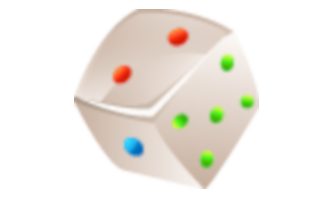Animal Growth and Reproduction
Science, Grade 4
Animal Growth and Reproduction
Study Guide

Animal Growth and Reproduction
Flash Cards

Animal Growth and Reproduction
Quiz

Animal Growth and Reproduction
Worksheets

Animal Growth and Reproduction
Games

Study Guide Animal Growth and Reproduction Science, Grade 4
❮
1
/
4
❯
ANIMAL GROWTH AND REPRODUCTION Life Cycles A life cycle is the stages of development an organism goes through starting from an egg to growing into an adult. Living organisms each have their own unique way of reproducing, giving birth, growing, and developing. Organisms such as mammals and birds have simple life cycles. These organisms look similar to their parents when they are born. Many organisms, however, have complex life cycles and do not look like their parents when they are born. Lesson Checkpoint: What is a life cycle? Metamorphosis Metamorphosis is the process of a rather sudden change in the appearance and form of an animal while growing into an adult. Organisms that go through incomplete metamorphosis go through three stages of development: egg, nymph, and adult. Lesson Checkpoint: What are the three stages of development in incomplete metamorphosis? © Copyright NewPath Learning. All Rights Reserved. Permission is granted for the purchaser to print copies for non-commercial educational purposes only. Visit us at www.NewPathLearning.com.
Organisms that go through complete metamorphosis go through four stages of development while include: egg, larva, pupa, and adult. Most insects go through complete metamorphosis. Lesson Checkpoint: How many stages are in complete metamorphosis? Animals produce offspring in a variety of ways. • Many animals have live births, which is when their offspring develop inside the female parent and then the parent gives birth to the live young. This type of development is called internal development. • Other organisms, like chickens and frogs, lay eggs instead of having live births. External development is when an organism develops outside of an organism. Animal life cycles vary in how long they take. Some animals have short life cycles while others take longer. © Copyright NewPath Learning. All Rights Reserved. Permission is granted for the purchaser to print copies for non-commercial educational purposes only. Visit us at www.NewPathLearning.com.
Reproduction Organisms also reproduce in several different ways. Reproduction is the creation of a new individual or individuals from existing individual or individuals. Fertilization Fertilization is the union of a male sperm and a female egg to form an offspring. This is one way animals reproduce. Internal fertilization takes place inside an organism. Fertilization does NOT need to take place in every organism in order for reproduction to occur. A single individual can produce offspring without fertilization from another organism without fertilization taking place. This is called asexual reproduction. Some animals develop inside the parent organism, as in those who have live birth, and it is called internal development. External development is when an organism develops outside of an organism. Budding is the process of an offspring growing out of the body of the parent. Hydras are an example of an organism that reproduces asexually through this process. If a piece of a parent is detached, and it can grow and develop into a completely new individual, this process is known as regeneration. Some types of worms and starfish can regenerate in this way. Lesson Checkpoint: What are two ways an organism can reproduce asexually, without fertilization occurring? © Copyright NewPath Learning. All Rights Reserved. Permission is granted for the purchaser to print copies for non-commercial educational purposes only. Visit us at www.NewPathLearning.com.
Traits Animals have both inherited and acquired traits. An inherited trait is a characteristic or quality that an organism is born with. An acquired trait is a trait one learns through its experiences but is not born with. Heredity is the passing of traits and characteristics from parents to their offspring. Lesson Checkpoint: What is the difference between an acquired and inherited trait? © Copyright NewPath Learning. All Rights Reserved. Permission is granted for the purchaser to print copies for non-commercial educational purposes only. Visit us at www.NewPathLearning.com.
